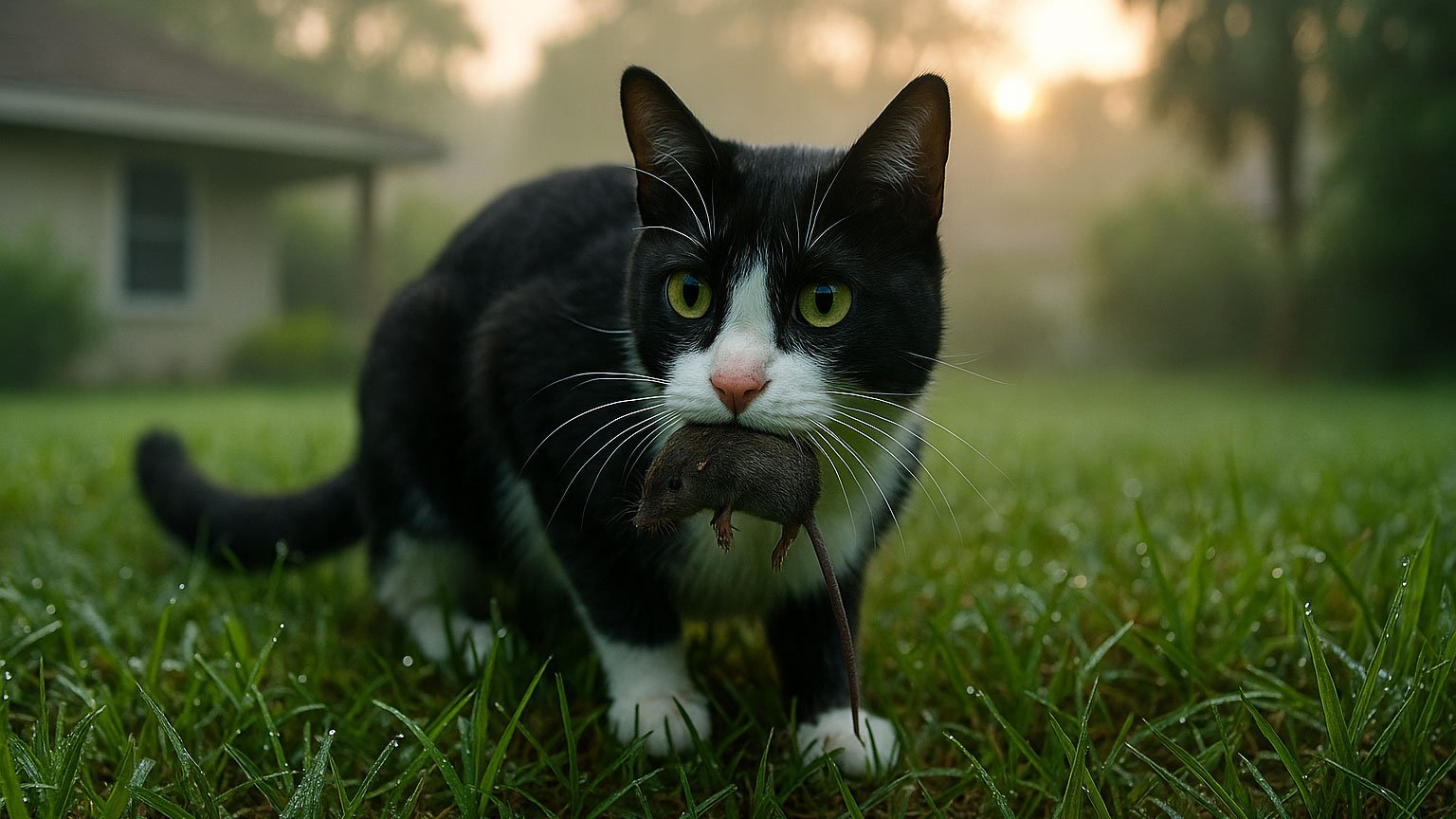The Cat Who Caught a Virus (Twice): Pepper the Feline Hero of Virology
In the shadowed grasses of a Gainesville backyard, the predator returns.
The morning sun rises over Florida, glinting off dew-covered blades as a sleek, black-and-white cat pads silently through the underbrush. In his mouth, a prize: not a toy, not a snack, but something far more consequential. What Pepper, a housecat with a penchant for hunting, has brought home may once again rewrite what we know about viruses.
This isn’t Pepper’s first scientific contribution. His human, Dr. John Lednicky—a virologist at the University of Florida—has grown accustomed to Pepper’s unusual “gifts.” And as luck (and science) would have it, these feline finds have twice led to the discovery of viruses unknown to science.
A Cat's Curiosity, a Scientist's Insight
Pepper’s most recent prize was a dead Everglades short-tailed shrew (Blarina peninsulae), a rarely-seen and lesser-studied creature of Florida’s wilderness. Dr. Lednicky, rather than bury the small animal or toss it aside, brought it into the lab—a place where he’s no stranger to uncovering viral mysteries.
What they found was stunning: a never-before-seen strain of orthoreovirus, a group of viruses previously dubbed “orphan viruses” because, for decades, they were not linked to any known disease. But that perception has changed. These viruses are now recognized as potential threats, capable of causing brain inflammation (encephalitis), gastrointestinal issues in children, and even meningitis in some rare human cases.
The new strain—officially named Gainesville shrew mammalian orthoreovirus type 3 strain UF-1—is a genetic puzzle that could hold crucial clues about how viruses evolve, spread, and jump across species.
From Whiskers to the World Stage
This is the second time Pepper has unearthed a virus that made scientific headlines. Previously, he helped Dr. Lednicky discover the first known jeilongvirus in the United States, a rare and exotic pathogen. While most cats bring home socks or birds, Pepper brings the building blocks of viral breakthroughs.
But this isn’t just a feel-good story about a cat and a scientist. It’s a cautionary tale that underscores a truth conservationists and virologists alike have long warned: the natural world, when disrupted or misunderstood, holds unknown agents of disease. And these can leap from animals to humans with little warning.
Why Should We Care?
In an age where zoonotic diseases (those jumping from animals to humans) have reshaped our global landscape—from HIV to COVID-19—every new virus matters. And when a virus is found in a wild species like the Everglades shrew, the implications ripple across wildlife management, public health, and ecological conservation.
Consider this: viruses nearly identical to those found in that Florida shrew have also turned up in white-tailed deer in the U.S., farmed mink in China, and even a lion in Japan. That raises big questions about how these pathogens travel—and whether human-supplied feedstock might be part of the chain. Could what we’re feeding animals be spreading viruses across continents?
The Bigger Picture: Conservation and Collaboration
This discovery is a testament to the power of citizen science, even when it comes on four paws. But it also highlights a critical gap in our understanding of viral ecology in wildlife. The team’s next steps involve exposing the virus to blood from different animals to see who might be susceptible—and how dangerous this strain could be.
For now, the scientists urge caution, not panic. As doctoral candidate Emily DeRuyter put it, “Not enough is known about this recently identified virus to be concerned.” But the message is clear: pay attention. Learn. Prepare.
At Big Cat Rescue, we see this as a compelling reminder that our work—protecting wild cats and preserving their ecosystems—is deeply intertwined with human health. Wild animals aren't just charismatic symbols of nature. They're sentinels. When their worlds are out of balance, so are ours.
Final Purr-spective
Pepper, the virologist’s cat, has become an unexpected hero in the scientific community. But his discoveries come with a challenge to us all: to see nature not as something separate from ourselves, but as a vast, interconnected system.
We must invest in protecting wild spaces, monitoring wildlife health, and ending exploitative animal trades that increase our contact with unknown pathogens. Because the next pandemic may begin not in a market or a lab, but in a backyard—with a curious cat and a scientist who knew how to listen.
Support the Mission
Help us fund global wild cat conservation. Your support empowers researchers, protects habitats, and prevents the next potential outbreak by keeping wild cats safe—in the wild, where they belong.
🐾 Share BigCatRescue.org to learn more. Because even a housecat can change the world. Imagine what we could do—together.
Read more: https://www.livescience.com/health/viruses-infections-disease/scientists-cat-helps-discover-a-rare-virus-yet-again
